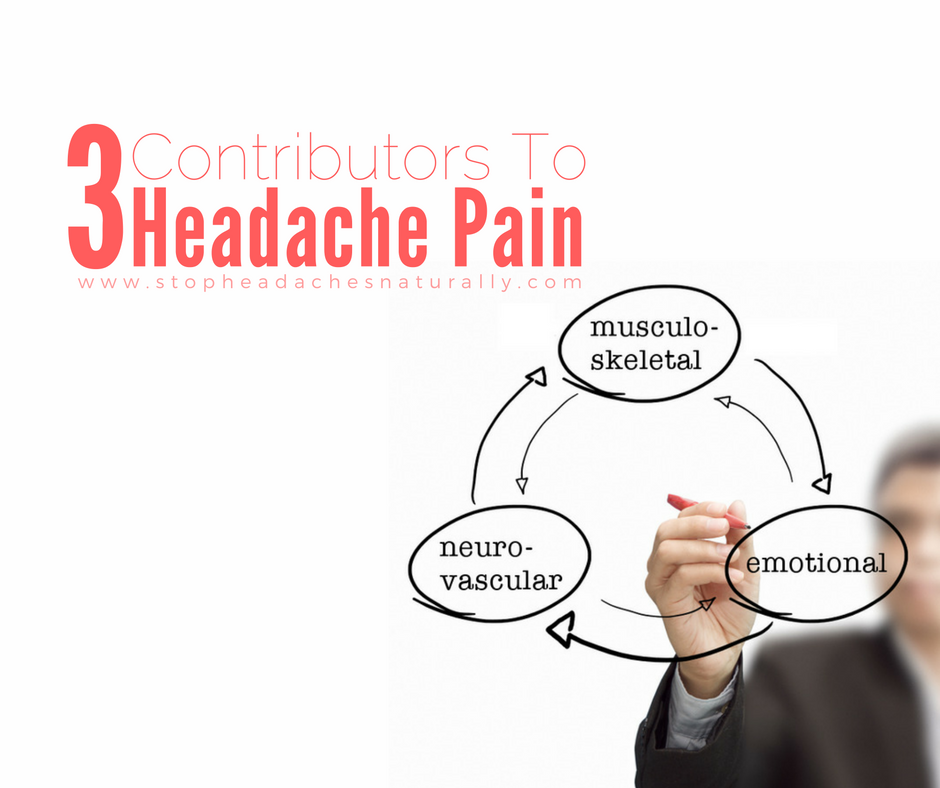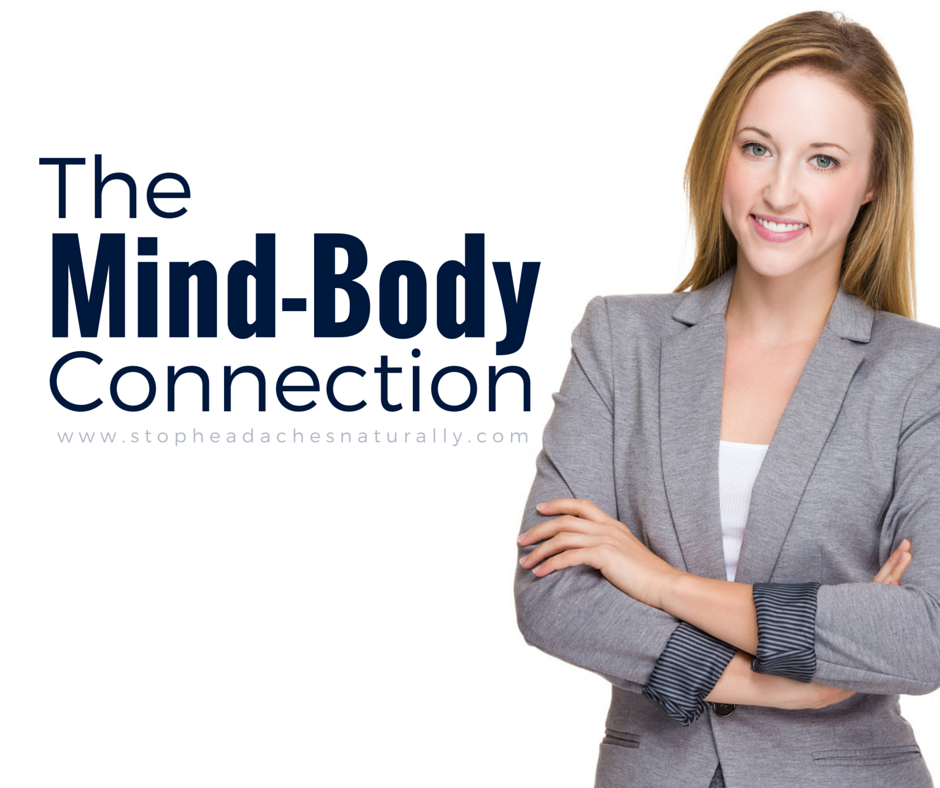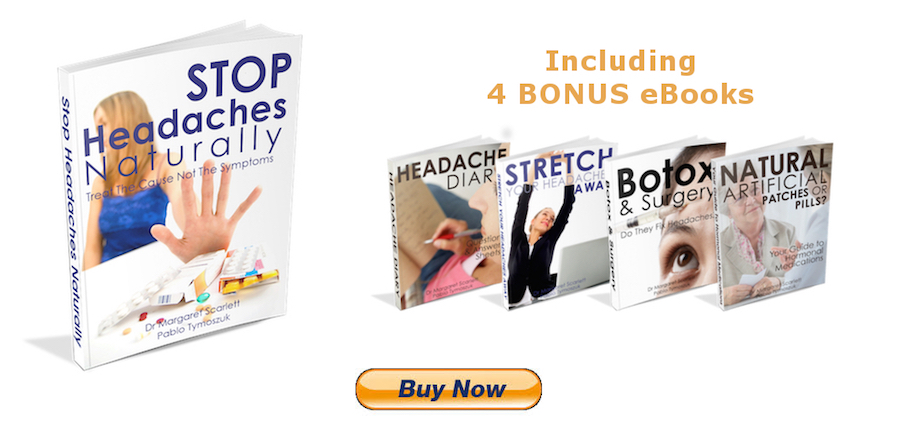3 Reasons You Have Headache Pain

When we started writing this book our focus was on headaches provoked by musculoskeletal problems, and especially by muscular trigger points. However many other factors unrelated to musculoskeletal problems are known to provoke headache attacks, including tiredness, dehydration, certain foods, changes in female hormone levels and flashing lights, to name but a few.
We wanted this book to be useful to as wide range of headache sufferers as possible, so we decided to increase its scope to cover such cases. However we then faced the problem of how to unify all of this information.
From our research we came up with a simple model based on the nature of headache pain. In this model, headache pain arises from a combination of 3 separate contributions:
1. A musculoskeletal contribution – due to problems with muscles and joints
2. A neurovascular contribution – due to changes in nerve activity and blood flow in parts of the brain
3. An emotional stress contribution – this acts like a pain volume control
Reducing any one of these contributions lessens the pain you feel. It may even lessen it sufficiently to prevent a headache from occurring in the first place.
"Reducing any one of these contributions lessens the pain you feel."
There are a number of natural methods available to reduce each of these contributions. For example, the contribution to headache pain from musculoskeletal problems can be readily treated by manual therapy, together with correction of posture, stretching and strengthening of postural muscles.
Emotional stress can be treated by a variety of techniques including relaxation, biofeedback and altering negative thought patterns. The neurovascular contribution can be reduced by making changes to your lifestyle, environment and diet and by reducing emotional stress.
These techniques and more are covered in this book.
This is an excerpt from the ebook Stop Headaches Naturally - Introduction: A Model For Headache Pain
The Mind-Body Connection

Your body position, posture, gestures and facial expressions can actually influence how you think, feel and even behave.
Read this interesting article from Berkley Wellness and find out more about the 4 Mood-Changing Poses:
1. Cross your arms to increase perseverance
2. Increase willpower by tensing your muscles
3. Smile to improve your mood
4. Assume a balanced position to be more levelheaded when shopping
N.B. cultural differences will influence the effect





